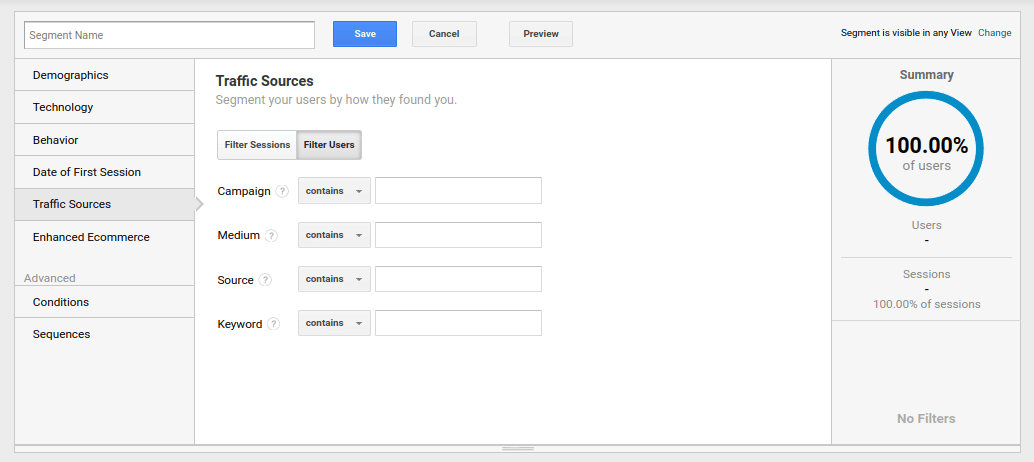Advanced Techniques for Remarketing In Google Analytics
Advanced Techniques for Remarketing In Google Analytics
Blog Article
Optimize Your ROI With Remarketing in Google Analytics
By harnessing the power of user data and customizing ads to certain target market sectors, companies can significantly amplify their conversion rates. The journey to optimizing ROI via remarketing is a nuanced path paved with understandings and chances that can reshape the trajectory of your advertising and marketing undertakings.
Recognizing Remarketing in Google Analytics
Recognizing remarketing in Google Analytics is essential for optimizing your electronic advertising and marketing method. Remarketing enables you to target individuals that have actually previously visited your internet site or connected with your app, providing them with tailored advertisements as they browse other websites or make use of various other applications within the Google Show Network. This strategy helps keep your brand name top of mind and urges customers to go back to your website, eventually increasing the chance of conversion.
By utilizing Google Analytics, you can track the efficiency of your remarketing projects, getting useful insights into customer actions, involvement, and conversions. This information allows you to fine-tune your messaging, bidding process, and targeting approaches to enhance the total effectiveness of your projects.
Additionally, understanding the various kinds of remarketing lists available in Google Analytics, such as common, dynamic, and similar target markets, allows you to produce extremely segmented and personalized projects tailored to specific customer sectors. This degree of granularity can dramatically enhance the relevance and influence of your remarketing initiatives, eventually optimizing your return on investment.
Establishing Remarketing Checklists
To successfully execute remarketing campaigns in Google Analytics, the first step includes creating and setting up remarketing checklists targeting certain user sectors based on their communications with your internet site or app. By establishing remarketing listings, you can customize your marketing initiatives to reach users that have already shown interest in your services or items.
To start, navigate to the Admin section of your Google Analytics account and pick the Home where you intend to develop the remarketing checklist. After that, under the Home column, click 'Audience Definitions' and pick 'Target markets.' Next off, click on the red 'New Target market' button and select 'Create New' to specify the parameters for your remarketing list.

Crafting Effective Remarketing Advertisements

When crafting your ads, focus on producing attention-grabbing headlines and engaging visuals that stand apart to prospective customers. Incorporate strong calls-to-action that urge users to revisit your site and complete a desired action. Make use of vibrant remarketing to reveal individualized advertisements including service or products that users have formerly checked out on your website.
Furthermore, make sure that your advertisements are mobile-friendly because a substantial part of net web traffic originates from mobile gadgets. Test various ad variations to recognize which messages and layouts drive the very best results. By continuously refining and optimizing your remarketing advertisements based upon performance data, you can optimize their efficiency and enhance your roi.
Studying Remarketing Efficiency

With Google Analytics, online marketers can track the efficiency of their remarketing campaigns in real-time, enabling them to identify patterns, patterns, and locations for renovation immediately. By analyzing the information, online marketers can figure out which ads are performing well, which audience sections are responding favorably, and which networks are driving the most conversions. This degree of granularity allows online marketers to make data-driven choices to optimize their remarketing advocate better results.
Enhancing ROI With Remarketing
Assessing remarketing data in Google Analytics makes it possible for marketing professionals to identify opportunities for enhancing return on financial investment (ROI) through strategic adjustments - What Is “Remarketing” In Google Analytics?. To optimize ROI with remarketing, it is essential to comprehend the habits of your audience. By assessing user interactions, such as the pages they visited, the products they checked out, or the activities they took on your website, you can customize your remarketing campaigns a lot more efficiently
Segmenting your target market based upon their habits enables you to create customized and targeted ads that are most likely to reverberate with them. By showing appropriate advertisements to specific segments of your target market, you can raise the possibilities of conversion and ultimately improve your ROI.
In addition, examining different ad creatives, messaging, and offers can aid identify what resonates best with your target market. A/B testing enables you to explore different aspects of your advertisements to establish what drives the highest involvement and conversion rates.
Conclusion
Finally, optimizing ROI with remarketing in Google Analytics calls for a critical method to analyzing individual behavior, segmenting audiences, producing tailored advertisements, and enhancing project efficiency. By leveraging data-driven insights and examining different approaches, companies can improve their remarketing efforts to drive greater interaction and conversion prices. This systematic technique guarantees that sources are effectively designated towards making best use of returns on financial investment in remarketing campaigns.
Next off, click on the red 'New Target market' button and choose 'Develop New' to specify the specifications for your remarketing list.
By continuously refining and maximizing your remarketing advertisements based on efficiency information, you can optimize their effectiveness and boost your return on investment.
By diving right into these understandings, marketing professionals can acquire a detailed understanding of exactly how their remarketing initiatives are browse this site resonating with their target audience and driving conversions. To maximize ROI with remarketing, it is vital to comprehend the behavior of your target market.In conclusion, maximizing ROI with remarketing in Google Analytics calls for a critical method to evaluating user behavior, segmenting audiences, creating tailored ads, and optimizing project performance.
Report this page